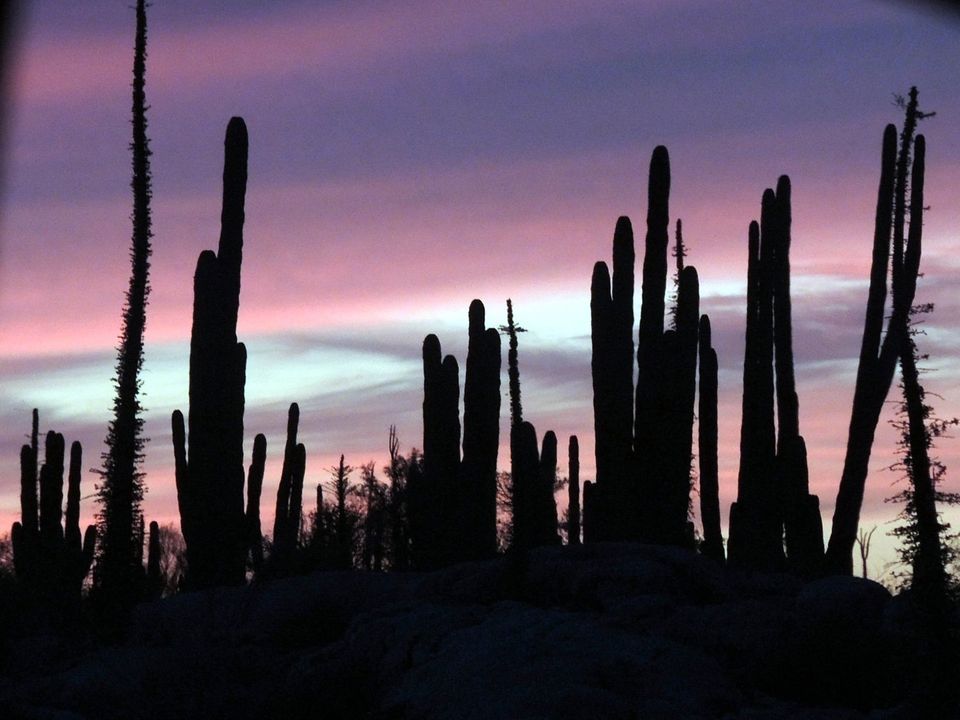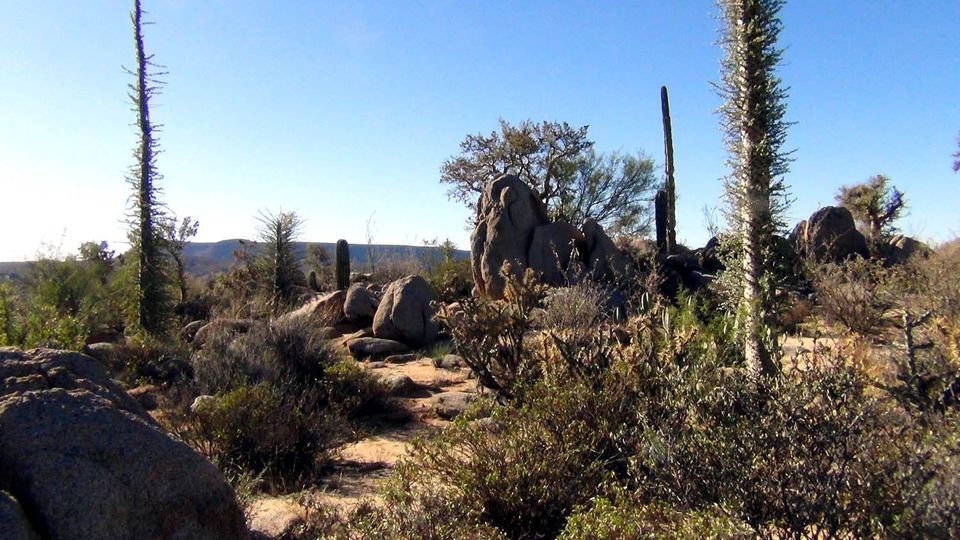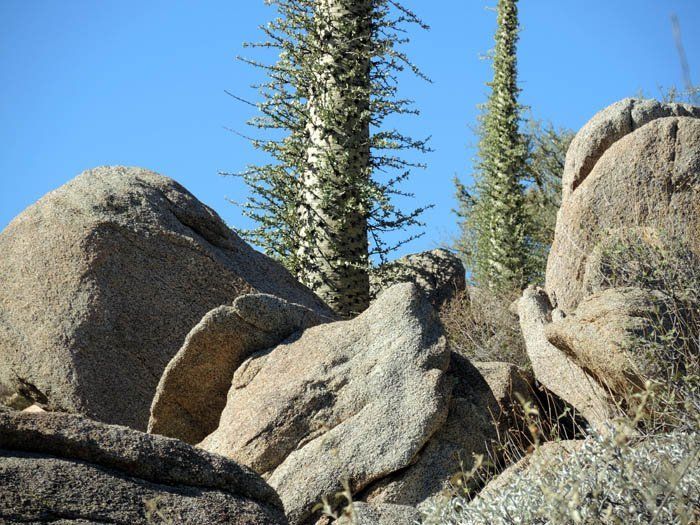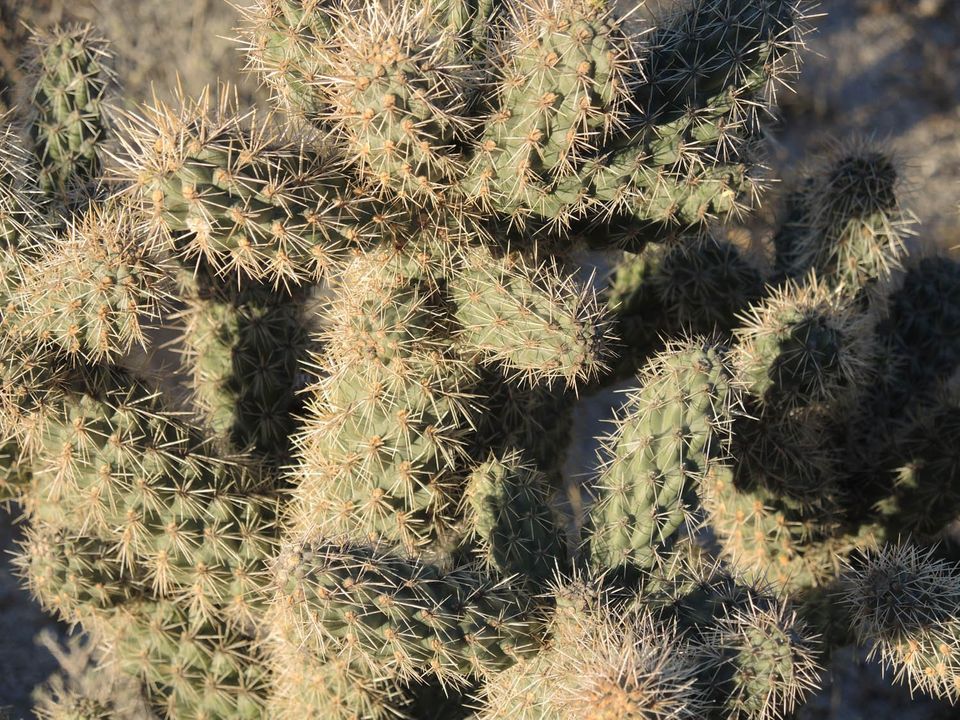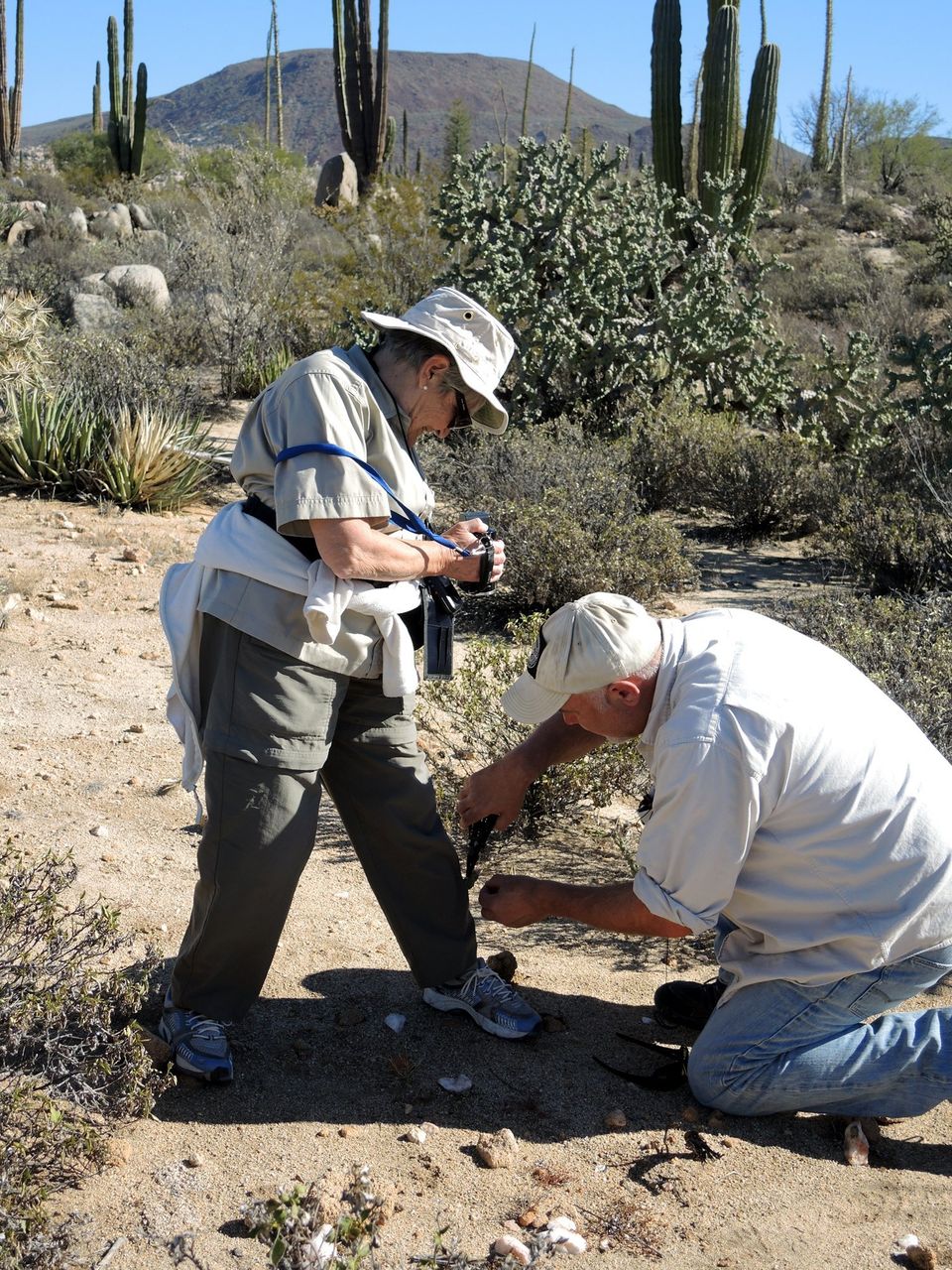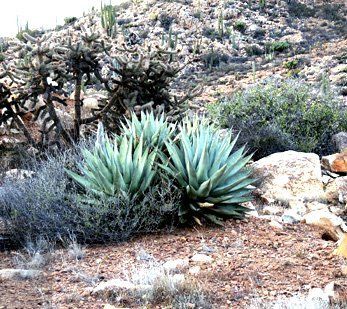Getting Attached to the Plants of the Desert
The central desert of the Mexican Baja Peninsula is a magical place. The sun will set with strange shapes silhouetted against the evening sky. The early morning light is clear and penetrating, accentuating the textures of the multi species of cactus and desert plants. There are boulders and caves with ancient primitive rock paintings, there is wildlife and other things of which to be aware. Three plants fascinated me.
Unique to the Baja California and the Mexican Sonora desert, is the spindly boojum tree. It has short branches at right angles to the trunk and small leaves. It blooms in summer and autumn and so not when I was there. Its English name, the boojum, comes from the imaginary creature invented by Lewis Carroll in the poem The Hunting of the Snark (1876). It creates weird shapes and can assume heights of 50 ft.
A cactus that caught my attention, literally, was the Jumping Cholla. It is densely covered in hollow spines which grab what ever they alight on. It you brush by a plant a piece will break off and literally fly to attach itself. When it reaches skin the tip curves just under the surface. Luckily for me, our guide was close by with the right tool to cut off the cactus from my pant leg. Then he had to pull out, one at a time, the three spines that had secured themselves to me. Three patches of blood stained my sock. Later I applied antiseptic cream and had no after effects.
In the desert I wasalsosurrounded in different locations by hundreds of century trees in various stages of growth.
These low growing agave, with a single tall flowering stem, wait many years to flower. Once they have, they die. The cactus house in the conservatory at Allen Gardens in Toronto had a century plant for many years. With great excitement we realized it was growing. The single stem grew to the glass ceiling. A pane had to be removed to allow it to continue its journey. We all waited for the flowers which proved to be rather a disappointing yellow broccoli. Then it died. The glass was put back.
Fast forward to February 2015 (when Toronto was experiencing a very cold winter) I was in the Baja passing mile upon mile of these sentinels. Here was the century plant in its natural habitat and visible in every stage of its life journey. Initially the long leaves radiate out in a ball. A single stalk grows tall. The top branches into flowers. The stem dries out and dies. It will remain standing until the base collapses. A new one grows.
How simple this is. How reassuring in its cycle and how massive in its presence in the wild. The mind goes back to the conservatory in Toronto where a pane of glass had to be cut to expose it to the sky. As a result of this, my experience in the open desert was fuller, grander and more poignant.
In an old blog entry I told the story of my first exposure to the century plant.
The Lesson of the Agave Americana
During the winter I escape the cold and venture to the conservatory in Allen Gardens in down town Toronto. At Christmas time it is filled with poinsettias and shortly after the new year it is ablaze with flowering bulbs.
On June 25th 2013 I was there for a specific reason. The mighty 75-year-old agave americana had decided this would be the year it would bloom. This is a once in a lifetime event for this cactus. It will die after the blooming.
But this Mexican native started shooting in March 2013 and hit the roof. The decision was made to cut the glass ceiling and let it take its chances with the non-tropical March weather. Soon the yellow blooms would appear starting at the bottom and working up.
I was in England when a friend emailed to say the blossoming had started. I returned to the site on Sunday July 28th. It was a busy place with photographers enjoying a sunny day in the park.
july agave outside through the roof
I had an emotional reaction to what I saw. Somehow, one envisages this mighty cactus will go out in a blaze of glory. One wants the blossom to be awe-inspiring and then the ensuing decline, dignified, as dreaming for one's own life and death. However, in reality as with the agave americana, living and dying are part of the same experience.
The top of the agave is all potential. The branches span out with green, blunt fingers. The centre part is all show with the fingers elongating into spikes of yellow giving a frothy impression. The lowest branches are now in decline, dropping the browning petals onto the glass roof below. Finally, the strong blade shaped leaves at ground level hang limply, fading. The tall stem now leans against the edge of the glass ceiling, cut to let it through. Padding prevents damage. A mirror for humans whose prime and decline are also on the same stem. The lesson learned is that life and death are on a continuum. Old age can only be reached after living a life. The declining phase is still a part of the living abundantly phase. We must not separate them or devalue any part of the process.
Allen Gardens was created in 1858 and today it is only a fraction of its former magnitude. But it is still a gem during any season. I wonder what will be the next surprise and life lesson to be learned there.




